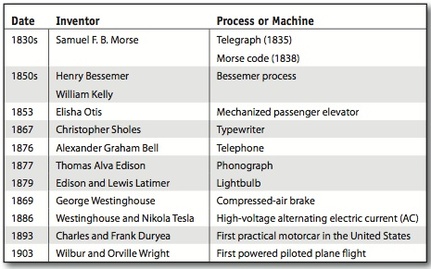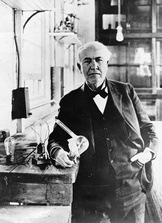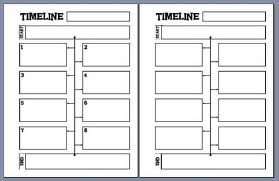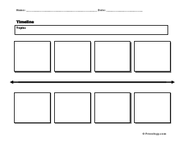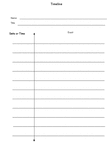Unit 2 : Industrial revolution / Great Awakening
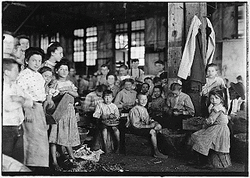
The 2nd Industrial Revolution Unit Study
The Technological Revolution
The historical context
The invention of the railway locomotive, the steamship, and, later, the telegraph and telephone transformed global communications in Big Era Seven. The time it took and the money it cost to move goods, messages, or armies across oceans and continents were drastically cut. People moved, or were forced to move, from one part of the world to another in record numbers. In the early part of the era African slaves continued to be transported across the Atlantic in large numbers; European migrants created new frontiers of colonial settlement in both the Northern and Southern hemispheres; and Chinese, Indians, and other Asians migrated to Southeast Asia and the Americas. International commerce mushroomed, and virtually no society anywhere in the world stayed clear of the global market. Underlying these surges in communication, migration, and trade was the growth of world population, forcing men and women almost everywhere to experiment with new ways of organizing collective life.
ENGAGE
Here's some neat ideas to engage your students as you introduce the topic:
**Desk lamp with burned out light bulb. Attempt to turn on lamp. “What is wrong?” Replace with working light bulb. Explain the invention of interchangeable parts.
- Industrial Revolution Lesson Plan (easy to read printable lesson plan)
STUDENT & Teacher TEXT
Summary of the Industrial Revolution <teacher note: I have several children who HATE reading. this summary is not intended to be the full content of our learning! A great intro perhaps. I have student textbooks that I read aloud, or summarize and often have them read small sections and summarize for me. My favorite texts are Abeka American History to refresh my memory and help me focus on important topics>
Middle School Reading with questions: more detailed and requires short essay answers
A new era of mass production arose in the United States because of technological innovations, a favorable patent system, new forms of factory organization, an abundant supply of natural resources, and foreign investment. The labor force came from millions of immigrants from around the world seeking a better way of life, and aided a society that needed to mass produce consumer goods. The changes brought about by industrialization and immigration gave rise to the labor movement and the emergence of women's organizations advocating industrial reforms.
-America's History
The Technological Revolution
The historical context
The invention of the railway locomotive, the steamship, and, later, the telegraph and telephone transformed global communications in Big Era Seven. The time it took and the money it cost to move goods, messages, or armies across oceans and continents were drastically cut. People moved, or were forced to move, from one part of the world to another in record numbers. In the early part of the era African slaves continued to be transported across the Atlantic in large numbers; European migrants created new frontiers of colonial settlement in both the Northern and Southern hemispheres; and Chinese, Indians, and other Asians migrated to Southeast Asia and the Americas. International commerce mushroomed, and virtually no society anywhere in the world stayed clear of the global market. Underlying these surges in communication, migration, and trade was the growth of world population, forcing men and women almost everywhere to experiment with new ways of organizing collective life.
ENGAGE
Here's some neat ideas to engage your students as you introduce the topic:
**Desk lamp with burned out light bulb. Attempt to turn on lamp. “What is wrong?” Replace with working light bulb. Explain the invention of interchangeable parts.
- Industrial Revolution Lesson Plan (easy to read printable lesson plan)
STUDENT & Teacher TEXT
Summary of the Industrial Revolution <teacher note: I have several children who HATE reading. this summary is not intended to be the full content of our learning! A great intro perhaps. I have student textbooks that I read aloud, or summarize and often have them read small sections and summarize for me. My favorite texts are Abeka American History to refresh my memory and help me focus on important topics>
Middle School Reading with questions: more detailed and requires short essay answers
A new era of mass production arose in the United States because of technological innovations, a favorable patent system, new forms of factory organization, an abundant supply of natural resources, and foreign investment. The labor force came from millions of immigrants from around the world seeking a better way of life, and aided a society that needed to mass produce consumer goods. The changes brought about by industrialization and immigration gave rise to the labor movement and the emergence of women's organizations advocating industrial reforms.
-America's History
After 2 months of gathering materials for the industrial revolution I made a discovery. Modern Textbooks consider the industrial revolution in american a BAD thing. WHAT? The entire country went from a lack of communication, a lack of transportation, limited job opportunities, no running water, no electricity to the place we are now and that's BAD?!?!
So I will be adding more resources that reflect the advantages, advances and benefits of this amazing era of history!
So I will be adding more resources that reflect the advantages, advances and benefits of this amazing era of history!
DAILY LESSONS
2nd Industrial Revolution - Technological Revolution
Middle School Reading with reading comprehension
2nd Industrial Revolution - Technological Revolution
Middle School Reading with reading comprehension
STUDENT ACTIVITIES
L = grades grades 2-4 M= grades 5 - 9
L = grades grades 2-4 M= grades 5 - 9
Week 1
2nd Industrial Revolution - Technological Revolution
Middle School Reading with reading comprehension
Introduction Industrial Revolution Video
Key Point: It revolved around Textiles Railroads, Iron and Coal
Questions:
What was the Cottage Industry? http://industrialrevolution.sea.ca/causes.html
What 2 important developments did Eli Whitney create?
Answer: Eli Whitney : Cotton Gin & Interchangeable Parts
WATCH:
<Unintended consequences of inventions>
Math Worksheet Resources:
*Teaching Resources (to refresh your mind and draw students into the topic)
2nd Industrial Revolution - Technological Revolution
Middle School Reading with reading comprehension
Introduction Industrial Revolution Video
Key Point: It revolved around Textiles Railroads, Iron and Coal
Questions:
What was the Cottage Industry? http://industrialrevolution.sea.ca/causes.html
What 2 important developments did Eli Whitney create?
Answer: Eli Whitney : Cotton Gin & Interchangeable Parts
WATCH:
<Unintended consequences of inventions>
Math Worksheet Resources:
*Teaching Resources (to refresh your mind and draw students into the topic)
- A summary of the industrial revolution from teacher Manual includes concepts to teach and vocabulary, student activities
|
Week 2
intro: INVENTORS and their INVENTIONS the Amazing Discovery We will review only a few of the key inventions/inventors. Feel free to explore other inventions and share your findings. You will be given the opportunity throughout the weeks to choose an invention and learn about the creator and the benefits the invention provided. Use this page <PRINT page 1> to record your findings and be willing to share. These individuals could be added to your Book of Centuries or Timeline. _____________________________________________________ Week 1 - Day 1 STEAM POWER
How did the use of steam power change the shopping industry? What impact did this change have on the economies of England and other developing nations? L - Read about Robert Fulton - artist / inventor Steam Engine. Answer these questions in your journal: 1. What did Mr Fulton do for a living? 2. He assisted with the invention of the steamboat and what other water vehicle? 3. Tell me one more thing you learned about the steam engine. <PRINT: notebook pages and mini books (page 2)> Copyright note: notebook pages and history journal were created from Practical Pages _____________________________________________________ Week 1 - DAY 2 Nichola Tesla - a genius whose name is unknown.
|
STEAM POWER |
|
|
Week 1 - Day 3 Thomas Edison One of the most famous and prolific inventors of all time, Thomas Alva Edison exerted a tremendous influence on modern life, contributing inventions such as the incandescent light bulb, the phonograph, and the motion picture camera, as well as improving the telegraph and telephone. In his 84 years, he acquired an astounding 1,093 patents. Aside from being an inventor, Edison also managed to become a successful manufacturer and businessman, marketing his inventions to the public. A myriad of business liaisons, partnerships, and corporations filled Edison's life, and legal battles over various patents and corporations were continuous. The following is only a brief sketch of an enormously active and complex life full of projects often occurring simultaneously. * Very interesting facts: Thomas Edison was mostly deaf, went to public school for only 3 months. Saved a child from an on coming train...Excellent book for Reading for younger grades (although filled with lots of trivia for older kids too) Turn On The Light, Thomas Edison! (Before I Made History)* Watch the videos below and look at the list of all of Edison’s inventions. **copyright note: most of this days of work comes directly from All In One homeschool Year 4 Level L day 9 and 10. I highly recommend a review of this site for quality content and daily lesson plans. |
|
Week 1 Day 3
L = Watch these videos about Thomas Edison. http://www.youtube.com/watch?v=VVL8ptff7yI http://www.youtube.com/watch?v=6g58RNkQ3C8 Write a short story. It can be just a paragraph. Make up an invention and write about when you finished it. Here’s a beginning you could use, “I can still remember it like it was yesterday. I had been working for weeks perfecting my…” You can use this <print notebook page> to help you create an illustrated version of your story. (If you can read fifth grade level books and are interested in Edison, you could read this story of his life, The Boy’s Life of Edison.) ___________________________________________________________ Week 1 Day 4 Eli Whitney Eli Whitney attended Yale College in 1789 at age 23, and in 1793, he invented the cotton gin. This machine played a large role in the Industrial Revolution. Unfortunately, when it was invented, nobody, not even Whitney himself, realized that the cotton gin would revitalize slavery. Whitney's invention helped the cotton industry just when the South was suffering economic problems. The cotton gin (short for cotton engine) was a machine for getting seeds out of cotton. Where before the seeds had to be picked by hand, slaves used the machines to significantly increase production. Later, Whitney became quite famous for building muskets with interchangeable parts. These were the easiest and fastest guns to make. They became very popular due to their lower cost. There were good and bad things about these guns. Because they were easier to make, large quantities could be produced in a short period of time. This factor became important during the American Civil War. The quality of the guns, though, were not as good as those which were hand made. Choosing between quality and quantity, factory owners chose quantity. Whitney's interchangeable muskets became almost as popular as his cotton gin. L= read this biography on Eli Whitney Watch this Video __________________________________________________________________________________ Week 1 - Day 5 Day of Discovery choose a topic to explore. See page 79 - 81 in your text for inspriation
for the next 2 days you will choose an invention and do a web search to learn more about it. younger students - several inventions are listed to help you find the information Phonograph
Light Blub Let’s learn a little more about light and the light bulb. The light in the bulb basically is a fine wire, called a filament, that gives off light because it is heated up and gets hot. It’s actually atoms that are giving off light. Remember how they get excited when they heat up? The electricity travels into the bulb, heats up the atoms in the filament, causes them to jump around which gives off the light. To make the bulb shine as it does, it is filled with a gas to help it. The gas is called argon.
Here's a printable list of inventors and their inventions.. |
MORE TO EXPLORE...
“Captain of industry” was a term originally used during the Industrial Revolution describing a business leader whose means of amassing a personal fortune contributes positively to the country in some way. This may have been through increased productivity, expansion of markets, providing more jobs, or acts of philanthropy. (definition from Wikimedia) Here are some audio files for several individuals... Andrew Carnegie George Westinghouse Joseph Pulitzer Cornelius Vanderbilt Cyrus McCormick Charles Lewis Tiffany Frank W Woolworth Marshall Field George Pullman The Studebaker Brothers of South Bend Indiana George Eastman William Wrigley Jr. Milton Hershey E. I. DuPont Thomas Alva Edison John Davison Rockefeller Phineas T. Barnum |
Week 2
intro: Sweatshops and Child Labor. The childhood life that changed.
What was life like for children PRIOR to the Industrial Revolution?
FARMING CHILDREN: For children working their family farms how long were their days during planting and harvest? How did they spend their winters? What happened when their was a poor harvest?
A picture is worth a thousand words. Here are the pictures by schoolteacher turned photographer activist Lewis Hines. Read the descriptions, the children's ages to help your students better relate to the working conditions that existed in the age of Industrialization.
We need to keep in mind children of this Era were use to working long days in the fields during planting and harvest seasons. They often went hungry when the harvest was poor.
intro: Sweatshops and Child Labor. The childhood life that changed.
What was life like for children PRIOR to the Industrial Revolution?
FARMING CHILDREN: For children working their family farms how long were their days during planting and harvest? How did they spend their winters? What happened when their was a poor harvest?
A picture is worth a thousand words. Here are the pictures by schoolteacher turned photographer activist Lewis Hines. Read the descriptions, the children's ages to help your students better relate to the working conditions that existed in the age of Industrialization.
We need to keep in mind children of this Era were use to working long days in the fields during planting and harvest seasons. They often went hungry when the harvest was poor.
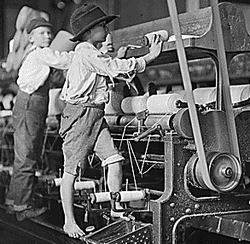
Week 2 - DAY 1 read the text "After the Civil War, the availability of natural resources, new inventions, and a receptive market combined to fuel an industrial boom. The demand for labor grew, and in the late 19th and early 20th centuries many children were drawn into the labor force. Factory wages were so low that children often had to work to help support their families. The number of children under the age of 15 who worked in industrial jobs for wages climbed from 1.5 million in 1890 to 2 million in 1910. Businesses liked to hire children because they worked in unskilled jobs for lower wages than adults, and their small hands made them more adept at handling small parts and tools. Children were seen as part of the family economy. Immigrants and rural migrants often sent their children to work, or worked alongside them. However, child laborers barely experienced their youth. Going to school to prepare for a better future was an opportunity these underage workers rarely enjoyed. As children worked in industrial settings, they began to develop serious health problems. Many child laborers were underweight. Some suffered from stunted growth and curvature of the spine. They developed diseases related to their work environment, such as tuberculosis and bronchitis for those who worked in coal mines or cotton mills. They faced high accident rates due to physical and mental fatigue caused by hard work and long hours." -www.Archives.Gov HIGHLY RECOMMENDED SITE: The History Place. Featuring the original photo captions by Lewis W. Hine L - read the text here and click the links on children and women to find out about the Industrial Revolution and work ________________________________________________________________ Week 2 - DAY 2 Summary: "The Industrial Revolution was the shift of production from simple hand tools to complex machines and from human and animal power to steam power. This transformation began in Britain in the mid-1700s and gradually spread across the world. It marked a major turning point in history, forever changing the lives of people across the globe." (Prentice Hall) Week 2 : Social Impact of the Industrial Revolution "The Industrial Revolution created material benefits as well as social problems." (Prentice Hall) Words to Watch: Look up and define these words in your history journal:
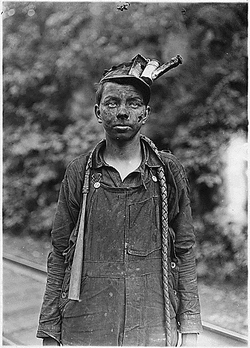
________________________________________
Week 2 - DAY 3 Industrial Revolution — coal was an important part of running all these new factories. Farming was no longer the main economy of the country. We were producing more from factories now and coal was the fuel for those factories. Here are more pictures of kids working in a mine. Use this <print Coal mines notebooking page > to write as if you were a worker in a coal mine. Use what you’ve learned about coal mines and the time period and write a paragraph about your life as a coal mine worker. Use the blank box for your title. 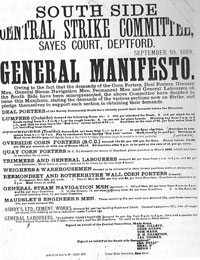
______________________________________
Week 2 - Day 4 Changes at work-unions for the better The punishment for creating a trade union was imprisonment. Regardless of this law, some joined trade unions anyway, along with creating strikes and riots. The reason that the unemployed rioted was because they wanted to have a “revenge” on the ones that were working because they felt that their jobs were taken by them. The employed fought to raise their wages and improve their working conditions. Both the employed and unemployed rioted by destroying machinery. In the 1800's, the lives of this class started to improve. It eventually became no longer illegal to form trade unions. -cited from www.industrialrevolutionresearch.com THOUGHTS and DISCUSSIONS... Read this article which briefly summarized the labor unions and answering the questions in your history journal. Be prepared to discuss your answers. Trade union: Strikes: Riots: Listen to the Bobbin Girl read aloud L - FREE Bobbin Girl Unit Study <PRINT the pieces you might want to use for your report> **copyright note: free bobbin girl unit study comes from Free Homeschool Share *we will discuss more about individuals who helped to make changes in the lives of the workers.... 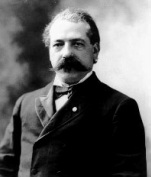
Samuel Gompers he rose from work in tenement sweatshops to become the most influential leader of the labor movement. when Samuel was a young immigrant he enjoyed his experience as a cigar maker. in his thirty's Gompers helped form the American federation of labor and Gompers remained the head of the federation for 40 years.
|
|

_________________________________________
Week 2 - Day 5 You are a child laborer webquest: After viewing the photos and reading their descriptions select one of the four roles: Factory Worker, Miner, Seafood & Farm Hand, or Newsboy. alternate activity: Choose a Capital of Industry (a business leader whose means of amassing a personal fortune contributes positively to the country) as seen on the right column under week 1. Explore how they made their fortune 2. discover the positive impact 3. record your findings in your history journal |
Great Awakening and the Church Response
We are digging in now. Let's begin to look at the reaction and the response of the Church to the plight of the poor, the working child and the immigrants. Begin thinking about what topics interest you most. At the end of the week you will be given the opportunity to choose a topic to present. It can be biographical or based on an event. Page 94 in your text will give you some idea of what you can put together.

Week 3
________________ Week 3 Day 1
George Mueller George was deeply concerned for the orphans of the industrialized England. What motivated him to trust God alone for support of these orphans?
"Where Faith begins, anxiety ends; Where anxiety begins, Faith ends. " Mr Mueller continues to explain this expression like this: "Ponder these words of the Lord Jesus, " Only believe." As long as we are able to trust in God, holding fast in heart, that he is able and willing to help those who rest on the Lord Jesus for salvation, in all matters which are for His glory and their good, the heart remains calm and peaceful. It is only when we practically let go faith in His power or His love, that we lose our peace and become troubled. This very day I am in great trial in connection with the work in which I am engaged; yet my soul was calmed and quieted by the remembrance of God's power and love; and I said to myself this morning: "As David encouraged himself in Jehovah his God, when he returned to Ziklag, so will I encourage myself in God;" and the result was peace of soul. ... It is the very time for faith to work, when sight ceases. The greater the difficulties, the easier for faith. As long as there remain certain natural prospects, faith does not get on even as easily (if I may say so), as when all natural prospects fail. " L = watch the reading of the book on George Mueller |
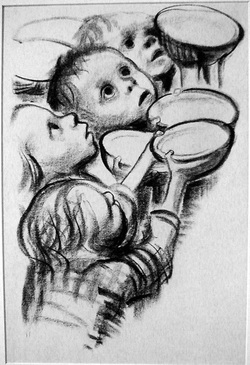
_______________________
Week 3 Day 2 & 3 Ladies who made a difference. Research these women who made a difference to families in this era. Jane Adams Lillian Wald read these articles about the woman who invented public health nursing Florence Nightengale L- BBC primary history links Elizabeth Fry - a Quaker and mother of many she sought to help the poor and reform the prison system. Mothers were often in prison with their children! Read the brief article of her life here. _____________________________________________ Week 3 Day 4 - Literature Connection: Authors who spoke about the conditions complete 1 of the following webquests. CHARLES DICKENS - webquest - once the webquest is complete apply what you have learned to the text. pages Mark Twain - discover his writing through the scrapbook link on PBSA short article with comprehension questions to help you determine the most important events in his life L= printables from MarkTwain House can be used for the suggested time line activity or for a lap book display board presentation ______________________________________________ Week 3 Day 5 Brainstorm and choose your topic for exploration and presentation You should have a good grasp of the struggle of individuals during the time of the Industrial Revolution. in your own way share what you have learned...see page 94 of your student text for inspiration. We still have another WEEK's worth of information to review all about REVOLUTIONS! But it would be good for you to think about which FORM of presentation excites you. Here's more about the elements of the presentation. |
Week 4 Medical Advances
Week 4 Latin American Revolutions
____________________________________________________
Week 4 Day 1
Listen to Disc one - Track 6 -7
Read page 59 -66
Reactionaries and liberals
Map it Out
Page 86 and 87 are student maps - make copies and fill them out according to the directions
Here's a video summary about Mexican Independence
Take some time today to work on your presentation. If your topic isn't chosen - complete that today and let your instructor know.
____________________________________________________________________________
Week 4 Day 2
Latin American Revolutions
northern Mexico Catholic Priest Father Miguel Hidalgo whose Sept. 16, 1810 call for revolution became Mexico's Independence Day
Watch the Brainpop Video on Mexican Revolution
Read: Mexican Independence Day - summary of the celebration
Summarize the Mexican Independence struggle. How long did it take?
Vocabulary:
Creole
mestizo
Americanos
The colors of the Mexican Flag each symbolize something to the Mexican people. The green symbolizes independence, white symbolizes religion, and red symbolizes union. Talk about how things are decorated in these colors for the fiesta, for example: flags, flowers, lights, confetti, noise makers. Have the students make one of these items as if it were for a decoration for a town square on Mexican Independence Day.
L= Today Mexican culture has influenced cultures around the world. In addition to contributions to cuisine, Mexico has also given the world different fruits and vegetables. Avocado, tomato, papaya, pineapple, guava, and vanilla beans originally come from Mexico. The Aztecs made a sacred drink using cacao beans, which we now use to make chocolate. Many words in English have Spanish origins. incafetería/cafeteria, barbacoa/barbeque, and cucaracha/cockroach. Other Spanish loan words include, tomate/tomato, vainilla/vanilla, andhuracán/hurricane. An accent placed over a letter means to emphasize that syllable.
Mexican Independence is a Celebration a Fiesta a PARTY see students here celebrating. What American holiday is celebrated with fireworks, parties and lots of noise?
Write about the Mexican Independence day in your history journal. Illustrate with the colors of the Mexican flag.
Art Lesson for this day includes making sombreos.
**complete lesson plan for teacher/parents
________________________________________________________________
Week 4 Day 3
project day...focus your time and energy to select HOW
Here are some classroom presentation suggestions from classrooms around the world: Do you have to choose one of these projects?
NO if you already have a great idea then begin working on research and materials!
However if you are struggling to find some 'traction' you might find it easier to start with one of these suggestions. I promise as we move through this curriculum selecting a format and topic will become easier.
Inventor display presentation - using a trifold presentation board to create a biographical display of an inventor, his invention using as many primary source documents possibleSales presentations as an inventor - learn about (and become) an inventor of the era and then try to sell your invention. a newspaper ad (11”X17” maximum size), a
Bookmark; a brochure; a model of your invention; a power point presentation; a video advertisement; a
Website/blog. The important part here is to have some form of visual aid in your presentation and to be CREATIVE!
Newspaper reporter - creative writing with historical research.
Timeline (templates are listed below day 4) an expanded timeline with explanations as to the international of people and events.
Poster or PowerPoint presentation - a variety of topics are included transportation, population growth, working conditions
Musical, technical, creative writing and other great ideas suitable for 9th - 12th grade students
_____________________
Safe Research Sites
Jericho Middle School Library
________________________________________________________________
Week 4 Day 4 Timeline
This is an era of revolution and reaction. Put Key events on your timeline. These could include topics on page 83.
But of course there are more check HERE for topics you might want to include. This timeline is about pulling together the information you have learned to create a simple reminder of when it all took place. Choose topics that will help you relate events and make connections.
Here are some free printable timelines you can use:
Draw pictures, print images or use Homeschool In the Woods Timeline pieces to make your timeline sharp and clearly understandable.
Week 4 Day 1
Listen to Disc one - Track 6 -7
Read page 59 -66
Reactionaries and liberals
Map it Out
Page 86 and 87 are student maps - make copies and fill them out according to the directions
Here's a video summary about Mexican Independence
Take some time today to work on your presentation. If your topic isn't chosen - complete that today and let your instructor know.
____________________________________________________________________________
Week 4 Day 2
Latin American Revolutions
northern Mexico Catholic Priest Father Miguel Hidalgo whose Sept. 16, 1810 call for revolution became Mexico's Independence Day
Watch the Brainpop Video on Mexican Revolution
Read: Mexican Independence Day - summary of the celebration
Summarize the Mexican Independence struggle. How long did it take?
Vocabulary:
Creole
mestizo
Americanos
The colors of the Mexican Flag each symbolize something to the Mexican people. The green symbolizes independence, white symbolizes religion, and red symbolizes union. Talk about how things are decorated in these colors for the fiesta, for example: flags, flowers, lights, confetti, noise makers. Have the students make one of these items as if it were for a decoration for a town square on Mexican Independence Day.
L= Today Mexican culture has influenced cultures around the world. In addition to contributions to cuisine, Mexico has also given the world different fruits and vegetables. Avocado, tomato, papaya, pineapple, guava, and vanilla beans originally come from Mexico. The Aztecs made a sacred drink using cacao beans, which we now use to make chocolate. Many words in English have Spanish origins. incafetería/cafeteria, barbacoa/barbeque, and cucaracha/cockroach. Other Spanish loan words include, tomate/tomato, vainilla/vanilla, andhuracán/hurricane. An accent placed over a letter means to emphasize that syllable.
Mexican Independence is a Celebration a Fiesta a PARTY see students here celebrating. What American holiday is celebrated with fireworks, parties and lots of noise?
Write about the Mexican Independence day in your history journal. Illustrate with the colors of the Mexican flag.
Art Lesson for this day includes making sombreos.
**complete lesson plan for teacher/parents
________________________________________________________________
Week 4 Day 3
project day...focus your time and energy to select HOW
Here are some classroom presentation suggestions from classrooms around the world: Do you have to choose one of these projects?
NO if you already have a great idea then begin working on research and materials!
However if you are struggling to find some 'traction' you might find it easier to start with one of these suggestions. I promise as we move through this curriculum selecting a format and topic will become easier.
Inventor display presentation - using a trifold presentation board to create a biographical display of an inventor, his invention using as many primary source documents possibleSales presentations as an inventor - learn about (and become) an inventor of the era and then try to sell your invention. a newspaper ad (11”X17” maximum size), a
Bookmark; a brochure; a model of your invention; a power point presentation; a video advertisement; a
Website/blog. The important part here is to have some form of visual aid in your presentation and to be CREATIVE!
Newspaper reporter - creative writing with historical research.
Timeline (templates are listed below day 4) an expanded timeline with explanations as to the international of people and events.
Poster or PowerPoint presentation - a variety of topics are included transportation, population growth, working conditions
Musical, technical, creative writing and other great ideas suitable for 9th - 12th grade students
_____________________
Safe Research Sites
Jericho Middle School Library
________________________________________________________________
Week 4 Day 4 Timeline
This is an era of revolution and reaction. Put Key events on your timeline. These could include topics on page 83.
But of course there are more check HERE for topics you might want to include. This timeline is about pulling together the information you have learned to create a simple reminder of when it all took place. Choose topics that will help you relate events and make connections.
Here are some free printable timelines you can use:
Draw pictures, print images or use Homeschool In the Woods Timeline pieces to make your timeline sharp and clearly understandable.

Week 4 - Day 5
End of Unit Presentation
End of Unit Presentation
